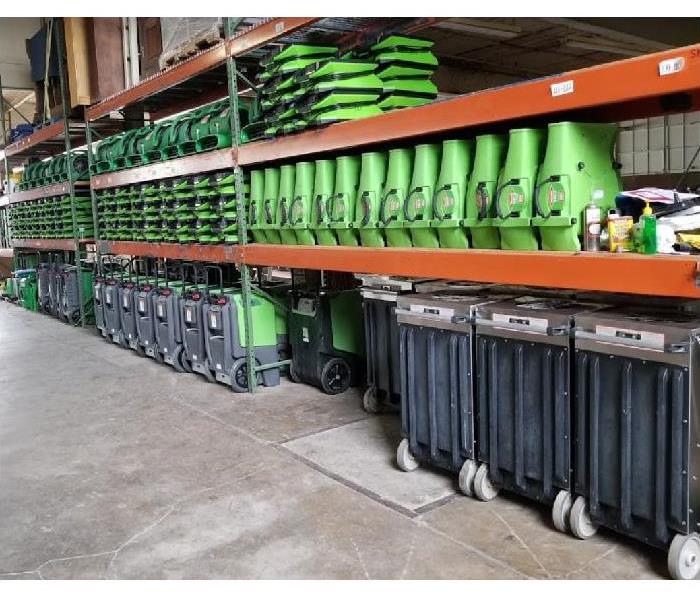What Are Some Things I Might Not Anticipate Happening During Water Restoration Work in My Morris Plains Home?
8/11/2020 (Permalink)
Water Restoration for Your Morris Plains Dwelling Is Often a New Experience, Why SERVPRO Promotes Transparent Communication and Prompt Answers to Every Concern
Water damage in your Morris Plains home creates a stressful and confusing situation. It is highly unlikely that you have experience with significant water intrusions inside your home, so you are on a steep learning curve. Many of the interventions a water restoration company pursues to return your home to the preloss condition are common sense, albeit more extreme versions of how you might have managed it on your own. Other responses might be surprising, while the third category of approaches frankly may shock you. We commit to keeping the conversation going throughout the restoration project, why we anticipate what we can and answer your questions honestly for the rest.
What Types of Restoration Services Seem Straightforward?
As you await our crew, you probably will pick items off the floor and move some things up, smart ways to protect the structure and contents of your Morris Plains home before water restoration efforts begin in earnest. You might also sweep water toward a floor drain or drop absorbent towels on puddles. You could consider revving the wet/dry vac in the basement or garage to suction standing water. We also do many of these actions as emergency services, but our equipment and tools are more powerful and targeted, why we can move large amounts of water fast. After the crew chief gives the okay, the mitigation begins:
- Submersible pumps take on water more than two inches deep, their flexible piping directing water to a treated sewer line
- Truck-mounted and portable extractors move in after the pumping, using commercial-strength negative pressure to remove the bulk of the standing water, similar but much more efficiently than your home wet vac.
- Squeegees and brooms move water toward drains and the extractors for removal, and we clean up debris.
Are Water Restoration Services Surprising?
Water and Moisture Detection
Water migrates into cracks and crevices why SERVPRO does not rely merely upon visuals to determine where the water is in your structure. To locate hidden water, trapped in building cavities, we might utilize tools that sample materials to indicate if moisture is present:
- Moisture Detectors-- the detectors have probes, some penetrating, that cause the apparatus to light up or make a beep when it locates moisture. We can use these tools to trace a water intrusion, although many tests need doing to outline edges of the moisture.
- Infrared Imaging Camera-- the camera provides images of temperature fluctuations that must be interpreted by a trained technician. The images show both collected or pooled water and structures with absorbed moisture. Neither form of water should be in building materials. Still, the removal strategies vary depending on whether the water is absorbed into components like framing, insulation, and drywall or represents a cache of fluids.
- Moisture Meters-- these tools measure the amount of water absorbed into porous materials. Some are penetrating and give levels for different layers. Others use sensors that test how conductive a material seems because moisture increases conductivity. False readings can occur if the sensor reacts to other conductive materials like nails, brads, staples, and other metal fasteners.
- Testing is Somewhat of an Art -- experts recommend that the same technician do all of the moisture detection and measurements for a single job. The suggestion reflects the subjective tendency of the testing. Having one person responsible for testing initially and throughout the project offers consistency as drying goals become attainable. Drying goals also depend on testing similar materials in an unaffected area of your home, so there are no “absolute” moisture levels guiding structural drying. Instead, in comparison with what we believe is an average level for your home is the touchstone.
Are Water Restoration Interventions Shocking?
As homeowners cope with the mess and disruption of water damage in Morris Plains, the last thing most would expect is the purposeful destruction of building materials as a restoration tactic. Despite the tearing out materials or cutting or drilling holes, controlled demolition does offer benefits and is why we use it:
- It removes ruined materials in a measured and methodical way that allows for water release and better airflow for drying (flood cuts)
- It gradually releases water to prevent collected fluids from crashing through structures (ceiling weep holes that start at the wall and move toward the middle of the room, only as each hole causes the collected water slowly to drain away)
- It avoids significant demolition of hard-to-built-back structures like brick or cinder block construction, allowing water to drain through holes drilled in grout or mortar lines
Training, experience, and a commitment to always meet or exceed the industry’s best practices is why SERVPRO of East Central Morris County delivers outstanding water restoration outcomes. One call to (973) 887-9100 gets the team rolling -- We’re Faster To Any Size Disaster.




 24/7 Emergency Service
24/7 Emergency Service
